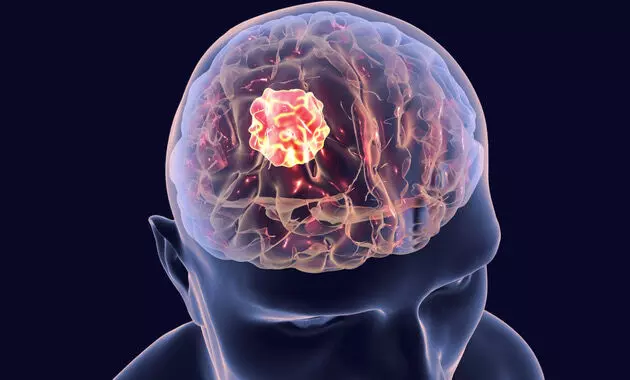Understanding causes, symptoms, precautions, and treatment of Brain Tumor
Brain tumors are not only treatable but potentially curable with the evolving therapies explains Dr V Naveen Reddy from Renova Hospitals, Hyderabad
By Newsmeter Network
Representative Image
Hyderabad: The landscape of brain tumor diagnosis and treatment is undergoing a remarkable transformation, offering unprecedented hope to patients and their families. Driven by rapid advancements in medical science and technology, what was once considered an insurmountable challenge is now increasingly met with precision, personalized care, and promising new therapies.
Understanding Brain Tumors:
Brain tumors are abnormal growths of cells within or around the brain. They can be broadly categorized into:
Metastatic (secondary) brain tumors: These are cancers that originate elsewhere in the body (e.g., lung, breast, colon, kidney, melanoma) and spread to the brain. These are approximately four times more common than primary brain tumors.
Primary brain tumors: These originate in the brain itself. They can be benign (non-cancerous, slow-growing, with distinct boundaries) or malignant (cancerous, fast-growing, and often infiltrating surrounding tissue). Some common types include:
Gliomas: Account for about 33% of all brain tumors, arising from glial cells that support neurons. Examples include astrocytomas (e.g., glioblastoma multiforme, a highly aggressive type, grade 4), oligodendrogliomas, and ependymomas.
Meningiomas: The most common primary brain tumor, originating in the meninges (protective layers around the brain). Most are benign and slow-growing.
Schwannomas: Often benign, slow-growing tumors of the nerve sheath, such as acoustic neuromas, affecting hearing.
While the exact causes of most primary brain tumors remain elusive, certain factors increase the risk. These include:
Genetic predisposition: A small percentage (less than 5%) are linked to inherited conditions like Neurofibromatosis, Von Hippel-Lindau disease, and Li-Fraumeni syndrome.
Radiation exposure: High-dose ionizing radiation therapy, for instance, can increase risk.
Age: Brain tumors can occur at any age but are more prevalent in older adults and, in some cases, children.
Revolutionizing Treatment Modalities
The approach to brain tumor treatment has become increasingly sophisticated, focusing on maximizing tumor removal while preserving neurological function and improving quality of life. Current treatment modalities often involve a combination of:
Advanced Neurosurgery: Surgical removal by craniotomy and excision remains the first line of treatment when possible.
Breakthroughs in neurosurgery include:
Neuronavigation systems: Acting like a GPS for the brain, these guide surgeons with millimeter accuracy.
Intraoperative MRI and CT: Real-time imaging during surgery ensures more complete tumor removal.
Minimally invasive approaches: Lead to smaller incisions, less pain, and faster recovery.
Robotic-assisted surgery: Enhances precision and access to deep-seated tumors.
Precision Radiation Therapy: Delivering high-energy beams to kill cancer cells while minimizing damage to healthy tissue. Advances include:
Image-Guided Radiation Therapy (IGRT): Adapts treatment based on real-time tumor scans, accounting for subtle movements.
Stereotactic Radiosurgery (SRS): Highly precise radiation delivered in a single or few sessions, sparing healthy tissue.
Proton therapy: A type of radiation therapy that delivers less radiation to non-targeted brain tissue.
Targeted Therapy (Precision Medicine): These drugs specifically target genetic mutations or markers in tumor cells, leaving healthy cells largely untouched. This leads to fewer side effects and better tumor control. A notable FDA approval in 2024 for low-grade gliomas with IDH1/IDH2 mutations is vorasidenib, which has been shown to significantly delay disease progression.
Immunotherapy: Harnessing the body's immune system to fight cancer. Emerging strategies include:
Checkpoint inhibitors: Help immune cells recognize and destroy tumor cells.
CAR T-cell therapy: Genetically engineers a patient's T-cells to specifically target and kill brain tumor cells.
Cancer vaccines: Aim to boost the body's immune response against tumor cells.
Chemotherapy: Uses chemical compounds to kill or slow the growth of fast-dividing cancer cells. Oral chemotherapy drugs like Temozolomide are commonly used, often in combination with other treatments.
Tumor Treating Fields (TTFields) Therapy: A non-invasive approach that uses low-intensity electric fields to disrupt cancer cell division.
New Advances: A Glimpse into the Future
The pace of innovation in brain tumor research is accelerating, bringing forth exciting new possibilities:
Molecular GPS for Immune Cells: Researchers are developing methods to guide immune cells directly to brain tumors, enhancing immunotherapy effectiveness.
Reprogramming Cancer Cells: Studies are exploring ways to reprogram aggressive brain cancer cells to become non-dividing, neuron-like cells, effectively halting tumor growth.
Rapid Genetic Testing during Surgery: New tests can rapidly identify genetic mutations in tumor samples during surgery, allowing for more immediate and tailored treatment decisions.
mRNA Vaccines: Experimental mRNA vaccines are showing promise in early clinical trials for glioblastoma, a highly aggressive brain cancer.
Focused Ultrasound: Under investigation for both tumor ablation and temporarily disrupting the blood-brain barrier to improve drug delivery to the tumor.
AI Innovation in Diagnosis: Artificial intelligence is being explored for the non-surgical detection of brain cancer spread.
Incidence in India: A Growing Concern
While precise, real-time national data for brain tumor incidence in India for 2023-2025 is still being compiled, the overall cancer burden in the country is on the rise. According to the National Cancer Registry Programme, India estimated 14,61,427 incident cancer cases in 2022, with a projection of a 12.8% increase by 2025 compared to 2020. Brain and central nervous system tumors contribute to this burden, and their incidence rates are a significant public health concern. While specific brain tumor incidence rates for India are not readily available for 2023-2025, global trends indicate a steady presence, with meningiomas and gliomas being common types. The focus on early diagnosis, specialized care, and access to advanced treatments is crucial in the Indian context.
A Future of Hope
The relentless pursuit of knowledge and innovative therapies is reshaping the outlook for individuals affected by brain tumors. From precision surgeries guided by advanced imaging to groundbreaking immunotherapies and targeted drugs, the journey towards a future where brain tumors are not only treatable but potentially curable is gaining significant momentum. This wave of progress offers a powerful message of hope to patients and their families, ensuring that every year brings us closer to more effective and less debilitating treatments.
(This article is written by Dr V Naveen Reddy, a Consultant Neurosurgeon, Renova Hospitals, Sanath Nagar, Hyderabad)